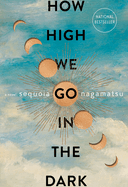
Sequoia Nagamatsu (Where We Go When All We Were Is Gone) boldly imagines the human cost and cultural revisions brought about by a deadly plague in How High We Go in the Dark, an intimate, inventive sci-fi novel-in-stories.
In the opening story, "30,000 Years Beneath a Eulogy," a grieving father arrives in Siberia to finish environmental research started by his daughter, whose fatal fall into a hidden cavern led her coworkers to discover the 30,000-year-old corpse of a girl whose genes look like a cross between Neanderthal, human and something like a starfish. The body also carries an ancient virus that causes organ failure, and when this "Arctic plague" escapes into the general population, it changes the face of human society.
Though some scenes feel reminiscent of recent history, Nagamatsu wrote much of the material prior to the Covid-19 pandemic. Shortlisted for the Ursula K. Le Guin Prize for Fiction, this beautiful collection of sorrows and foretellings should appeal to both literary fiction and sci-fi readers. --Jaclyn Fulwood, blogger at Infinite Reads

